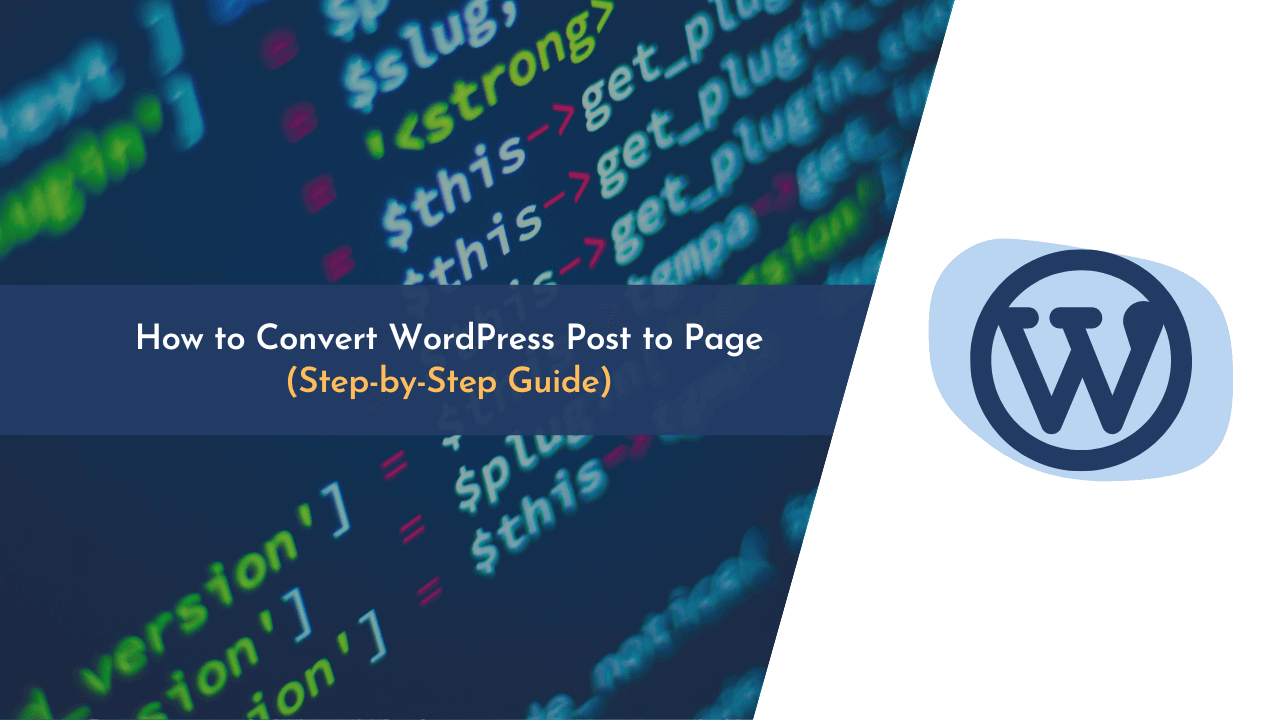Are you looking for ways to convert WordPress posts into pages?
There was a time when I mistakenly designed a whole landing page on a post-type layout instead of creating it on a page-type layout, and afterward regretted that decision. During that time, I even searched a lot on Google for tutorials – but later, I had to design the whole page again 🙁
If you are having similar issues with your blog and mistakenly made the mistake I did on my blog, then you won’t need to search anymore on Google, as here I’m going to show you a simple step-by-step guide on converting a post into a page in WordPress.
By following this guide, you’ll be able to understand the exact process I’m using nowadays to convert a post into a page in WordPress. And I’m sure this guide might save you a lot of time and effort as you won’t need to search the web for various tutorials anymore.
So without further ado, let’s get started…
How to Convert Posts into Pages in WordPress
There are multiple ways to convert a post into a page in WordPress – but the easiest of them is to use a plugin to do so.
Here are all the ways we’re going to cover in this article;
- Converting Posts Using WordPress Plugin
- Converting Posts to Pages from MySQL Database
- Copy Pasting Content from Posts to Pages
Using a WordPress plugin is the most convenient way for you, and by using a plugin, you can avoid manually transferring content from post to page, which can be time-consuming and tedious. Additionally, a plugin will ensure that all formatting and styling are correctly preserved in the transition.
So let’s start with this method.
1. Converting Posts Using WordPress Plugin
Using a WordPress plugin to convert posts to pages is one of the easiest methods, and here we’re using a plugin named “Post Type Switcher” for this purpose.
This plugin has more than 2,00,000+ active installations and over 4.7-star ratings in the WordPress repository, so you can be sure that it is reliable for your website. And it is continuously updated and well-maintained by its developers to ensure compatibility with the latest versions of WordPress and other plugins.
Now, let’s get started with this plugin…
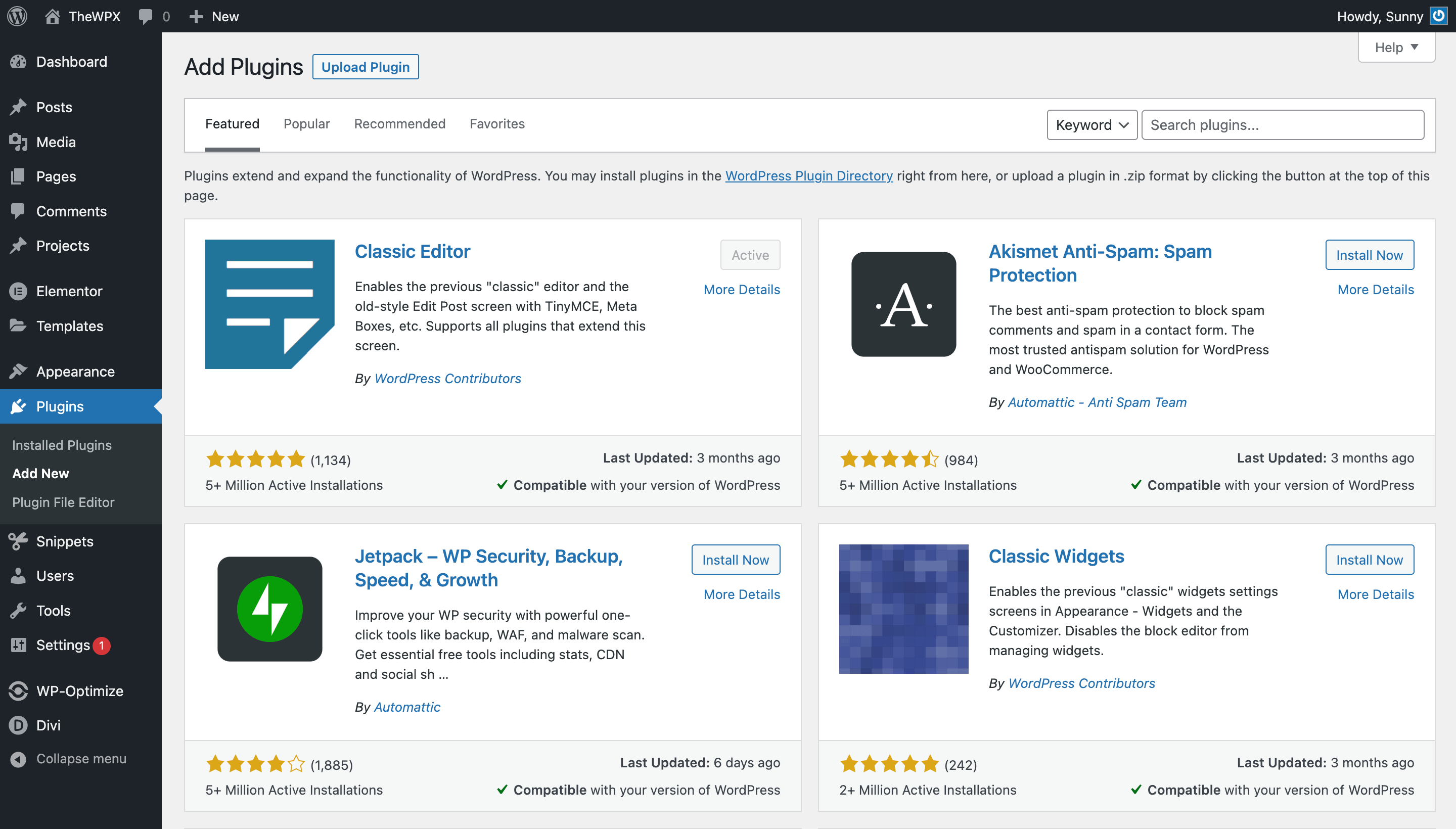
To begin, log in to your WordPress admin console and click on “Plugins > Add New.”
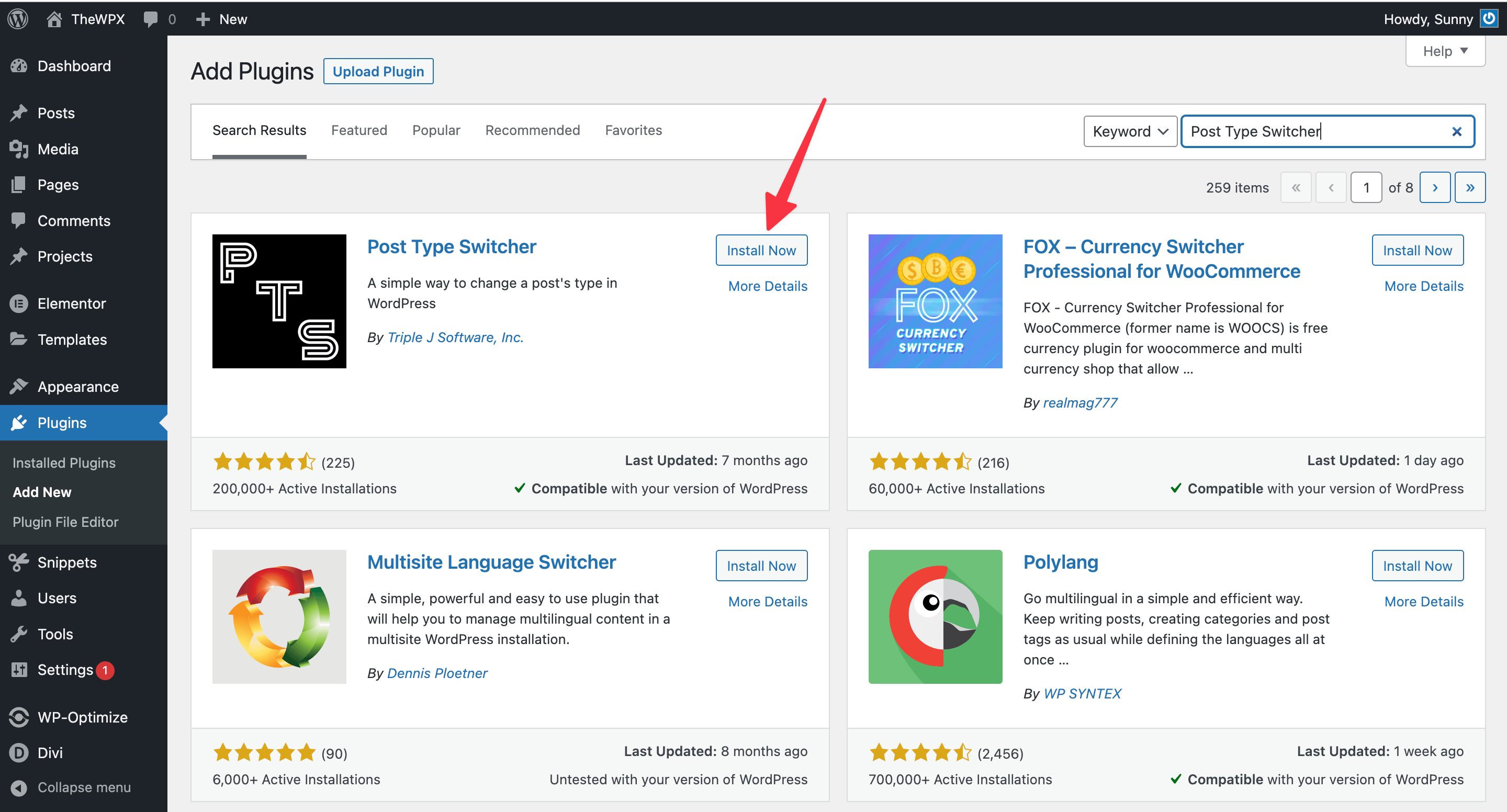
The first thing you need to do here is to search for the “Post Type Switcher,” and you have to install the first plugin that will appear on the search page, which is developed by the company “Triple J Software, Inc.“

Once the plugin has been installed on your website, visit “Posts > All Posts” and then select the post you want to convert. Afterward, click on the “Edit” option showing just beneath the selected post.
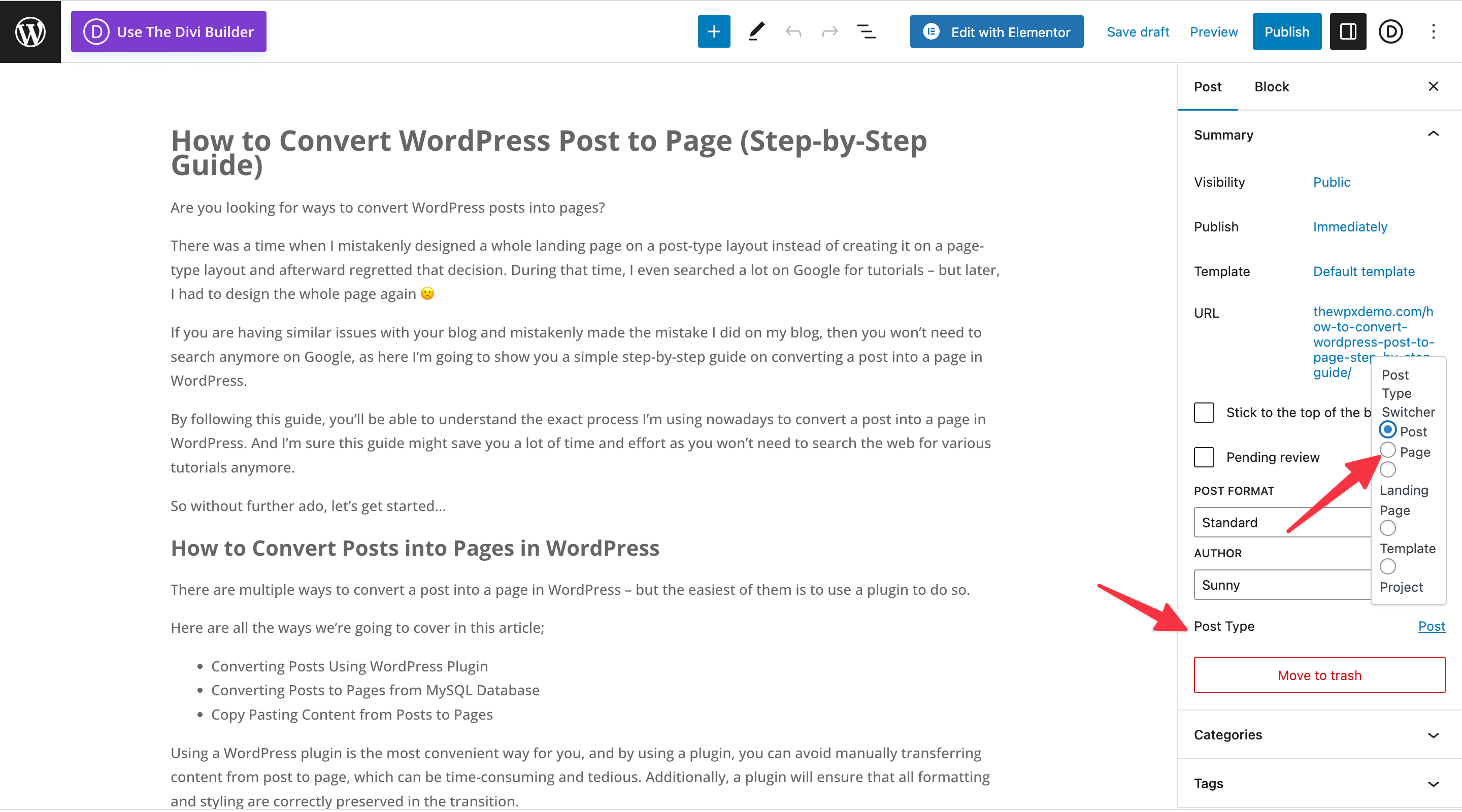
Upon opening the post, you’ll notice a new icon in the right menubar called “Post Type.” Click this icon and select the “Page” option, as shown in the image above.

Afterward, you need to click on the “Update” button, and it will ask for a final confirmation. Now, reload the post, and your page format will be automatically applied.
If you want, you can reverse this process by choosing the “Post Type“ option.
2. Converting Posts to Pages from MySQL Database
If you’re comfortable with editing codes on your website and are familiar with MySQL database, then converting a post from post type attribute to page type is one of the easiest things for you!
However, there are still lots of complications that’ll arise when converting a post to a page, especially if the post has a significant amount of content, custom fields, and other attributes added. Here we’re sharing some of the possible issues with you;
- Loss of data
- Broken links
- Missing custom fields
- Change in permalink (occasionally – depending upon your permalink structure), and
- Taxonomies
And it’s always best to take precautions, backup your site, and be aware of the possible complications that may arise.
Now, let’s see how to change the post type attribute using the MySQL database.
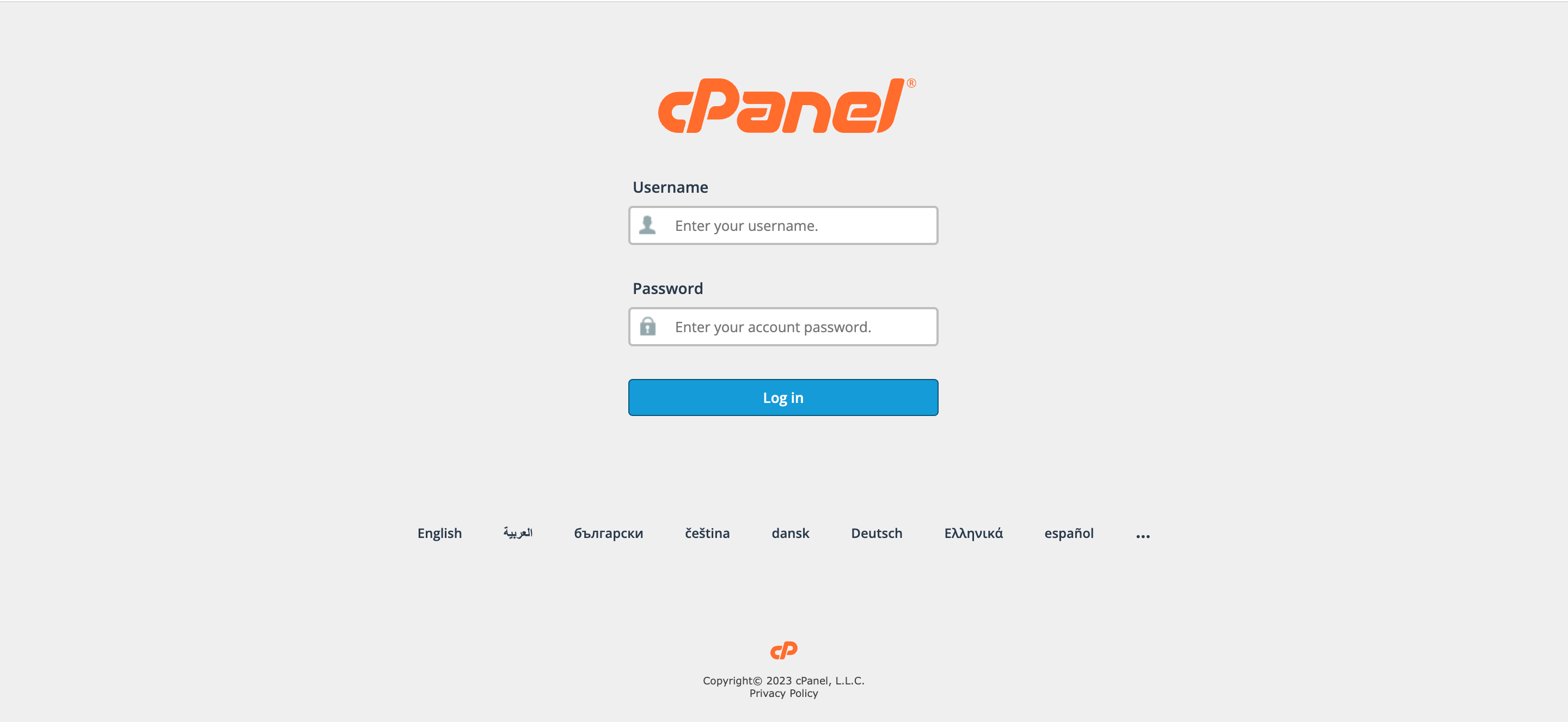
To begin, login to your cPanel by going to https://example.com:2087 (replace example.com with your domain name). Now, log in to your cPanel account with your username and password.
Once you’re logged in to your cPanel account, click on “phpMyAdmin,” which basically is a database management tool.
Now, locate the “tmp0376b4_posts” table inside your database, as shown above.
Please note that the table prefix “wp_“ can be different if you set a custom prefix during WordPress installation.
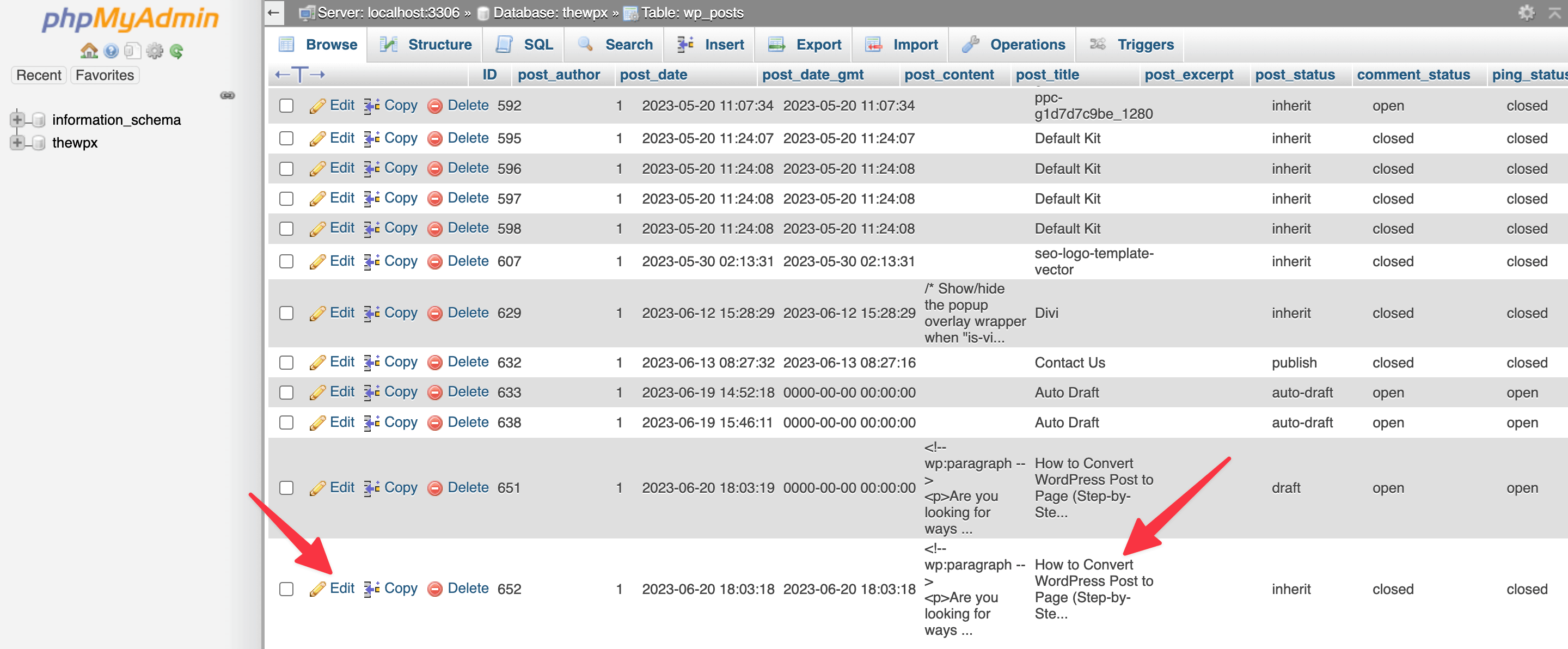
Here you need to find the post, and inside “tmp0376b4_posts,” you’ll see a column named “post_type.” Now, you need to click on the “Edit” option (usually a pencil icon) in the row for that post.

Afterward, you need to change the “post_type” from “post” to “page” and then click on the “Save” or “Go” button to make the changes.
Once done, you’ll now see the converted content as a page instead of a post.
3. Copy Pasting Content from Posts to Pages
A manual copy-pasting of content is one of the oldest methods to convert a post into a page in WordPress without the need for a plugin, and you will just need to copy the title, content, and other information from your post to a new page.
Here’s a step-by-step guide on doing so;

Begin with login into your WordPress dashboard.
Once you’re inside your dashboard, duplicate your browser’s tab. In one tab, open “Posts > All Posts” and select the post you’re looking to copy, and in another tab, open “Pages > Add New.”
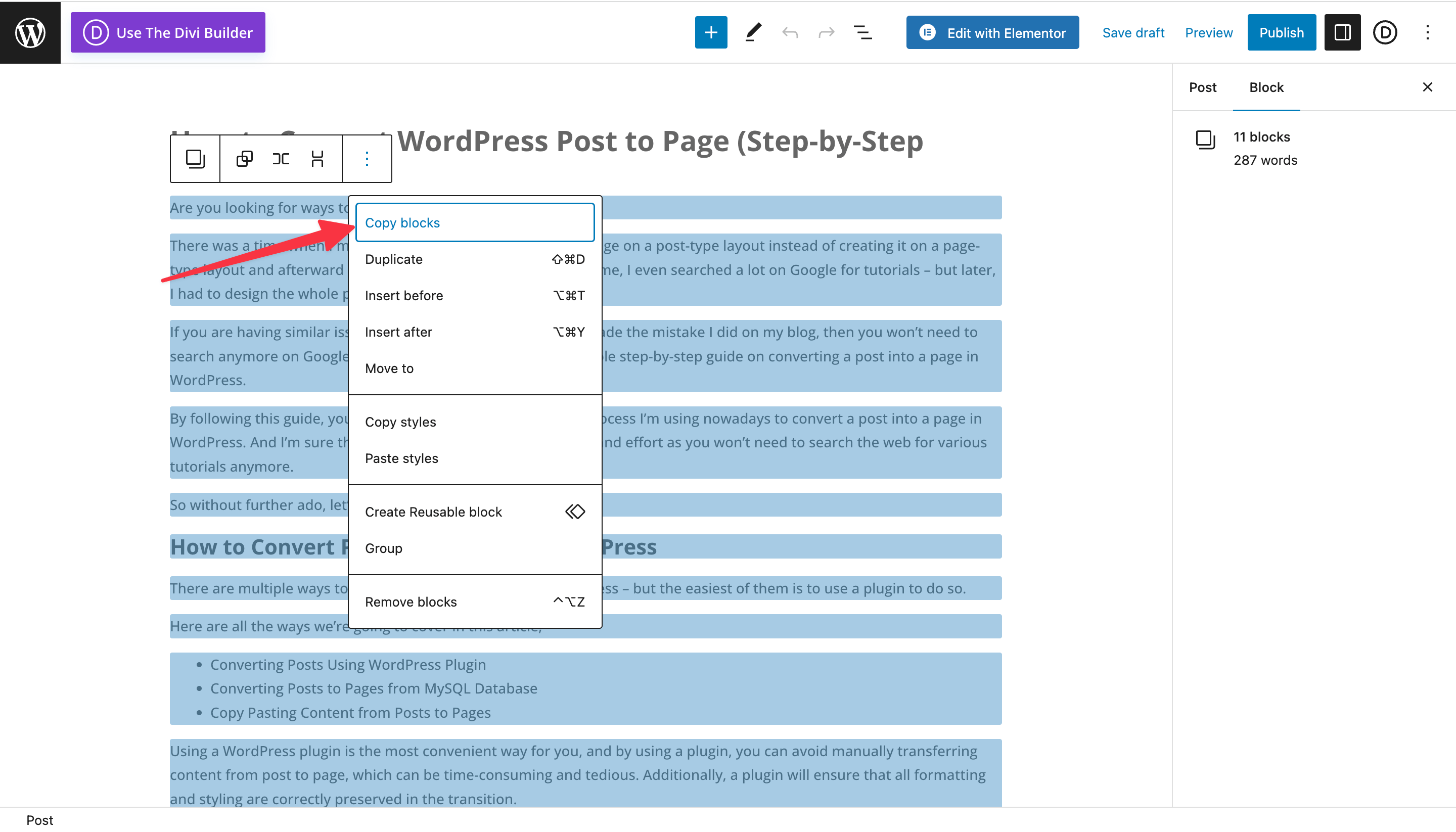
Now, you need to copy the post’s content and relevant information. This information can include;
- Copy the post title
- Copy the post’s content (select all the content using CTRL+A and copy it using CTRL+C).
- Note any categories, tags, or featured images used in the post so you can use them when creating the new page.
You need to paste this information one by one to the new page you’ve created in the second tab.
After this, configure the new page to match the old post’s style. For this, make these changes;
- Set the featured image of the page (if the post had one).
- Add any necessary categories or tags to the new page.
Author’s Note;
Note that pages do not have categories or tags by default, but you can create custom taxonomies or use a plugin to add this functionality if needed.
Once you’ve done adding all this information from your post to the page, click on the “Publish” option showing in the page column.
And it’s done!
Frequently Asked Questions (FAQs)
Still have doubts? Here we’re sharing a few FAQs that may help you solve your doubts.
Q. How do I convert WordPress posts to pages?
There are three methods to convert WordPress posts to pages:
- Using a WordPress plugin
- Manually copy-pasting, and
- Editing from the database.
Choose the method that best suits your needs and level of comfort with WordPress.
Q. Are posts and pages the same in WordPress?
No, posts and pages are not the same in WordPress. They serve different purposes and have distinct functionality.
- Posts: These are used for blog-style content, often displayed in chronological order on the blog page. Posts can be assigned to categories and tags, making it easy for readers to find related content. Posts also have built-in support for comments, enabling discussion and engagement with readers.
- Pages: These are used for static, timeless content that doesn’t change frequently, such as an “About Us” or “Contact” page. They don’t have categories or tags and usually don’t have comments enabled. Pages can be organized hierarchically with parent and child pages and can be added to website menus for easy navigation.
While these are the main differences, both post types can be customized using themes, page builders, and custom templates to create the desired look and feel.
Q. Should I create a page or post in WordPress?
The choice between creating a page or a post in WordPress depends on the type of content you wish to publish.
Ideally, posts should be used for blog post-style content that is regularly updated, while pages should be used for more static, permanent content.
Wrapping Up
Like you, I also make mistakes, and in this guide, I tried my best to share all the methods that consistently work for me.
All of these methods have their advantages, but I recommend the use of a WordPress plugin, as it is convenient, easy to use, and effortlessly converts posts into pages within a few clicks. In case you do not wish to use a WordPress plugin, you can manually transfer the content by copying and pasting it.
However, remember that sometimes, when you manually copy-paste the content, the overall layout, design, and typography of the page can become misaligned. In this case, you need to align them manually.
Do let me know if any of these works for you!

